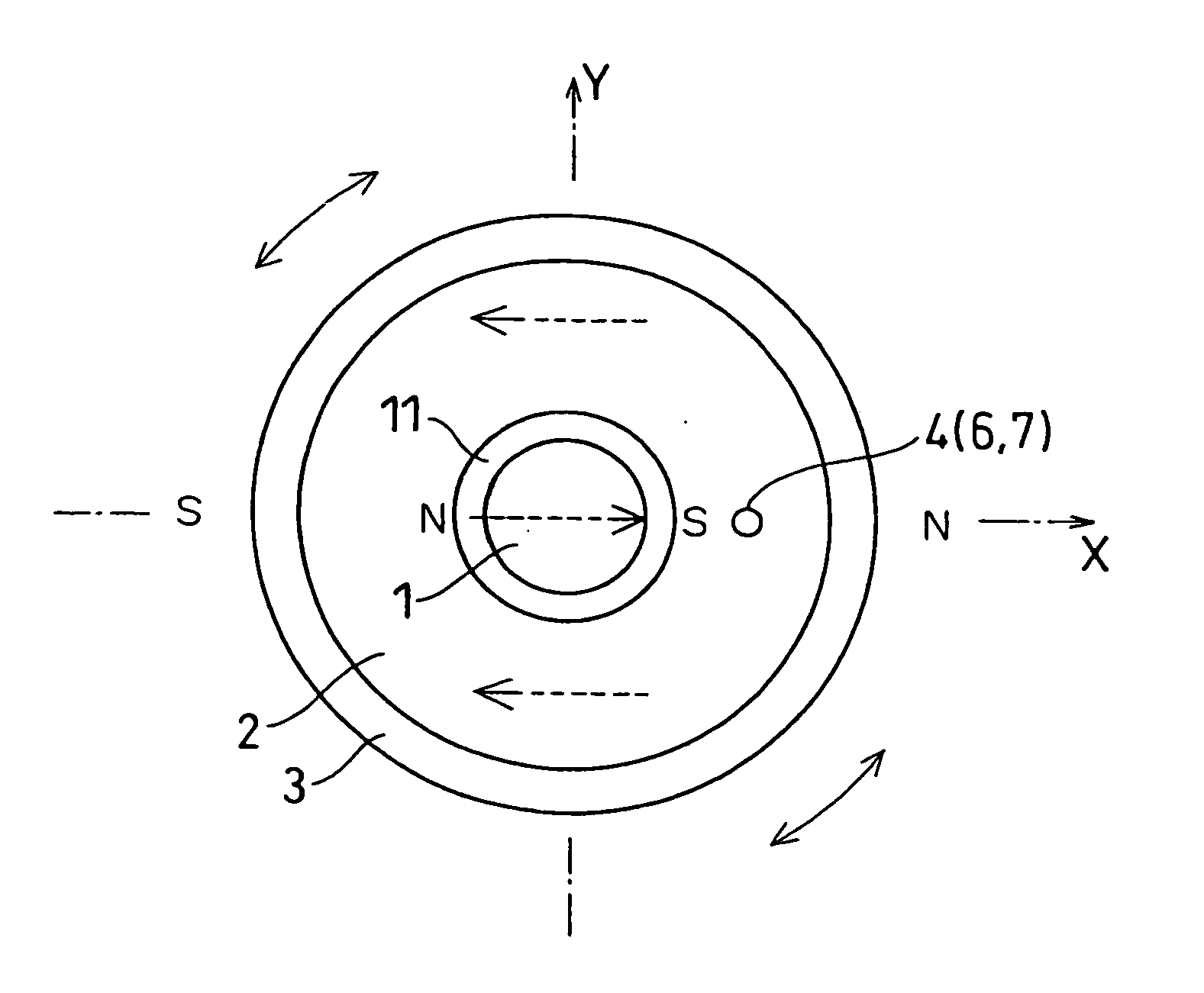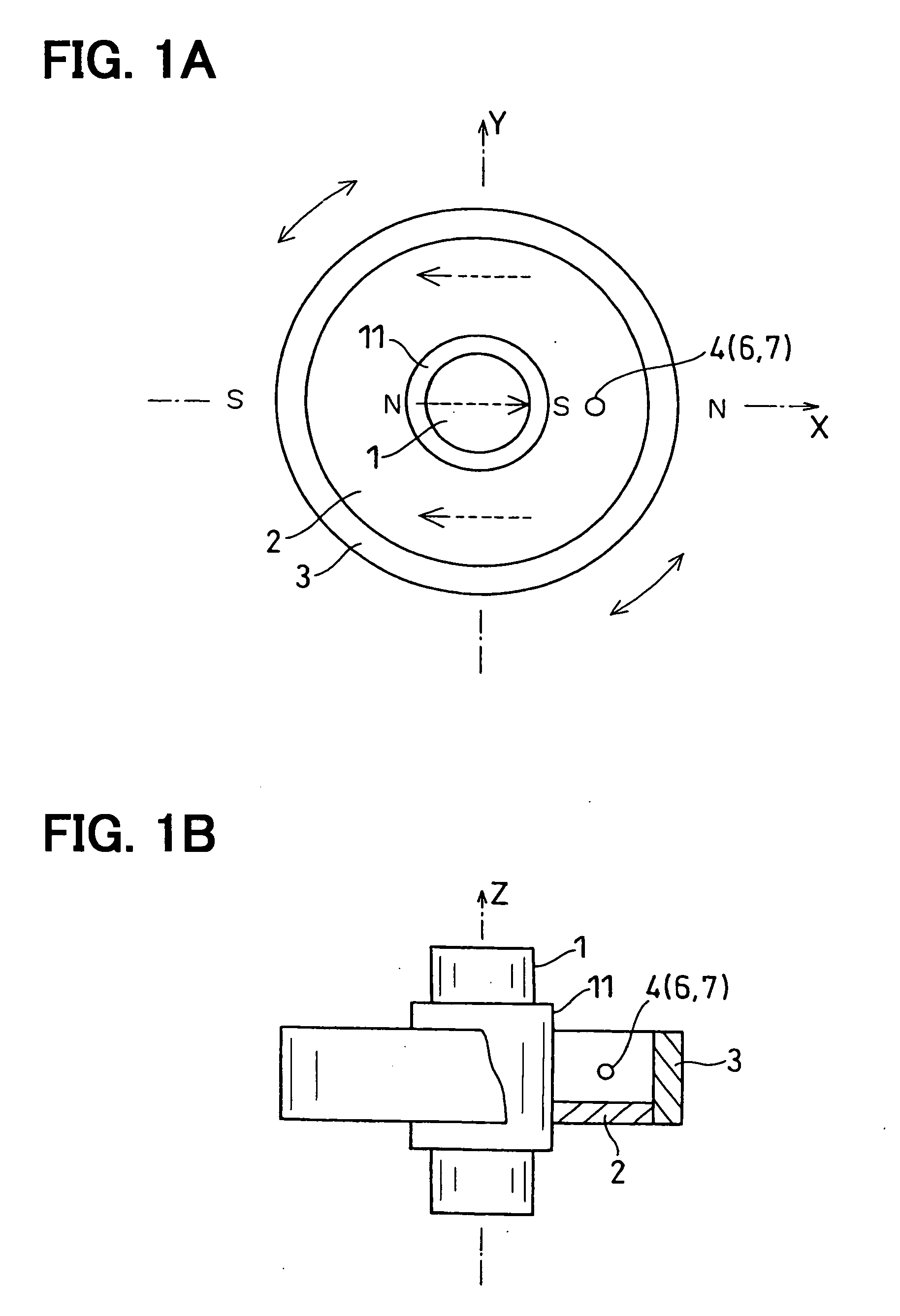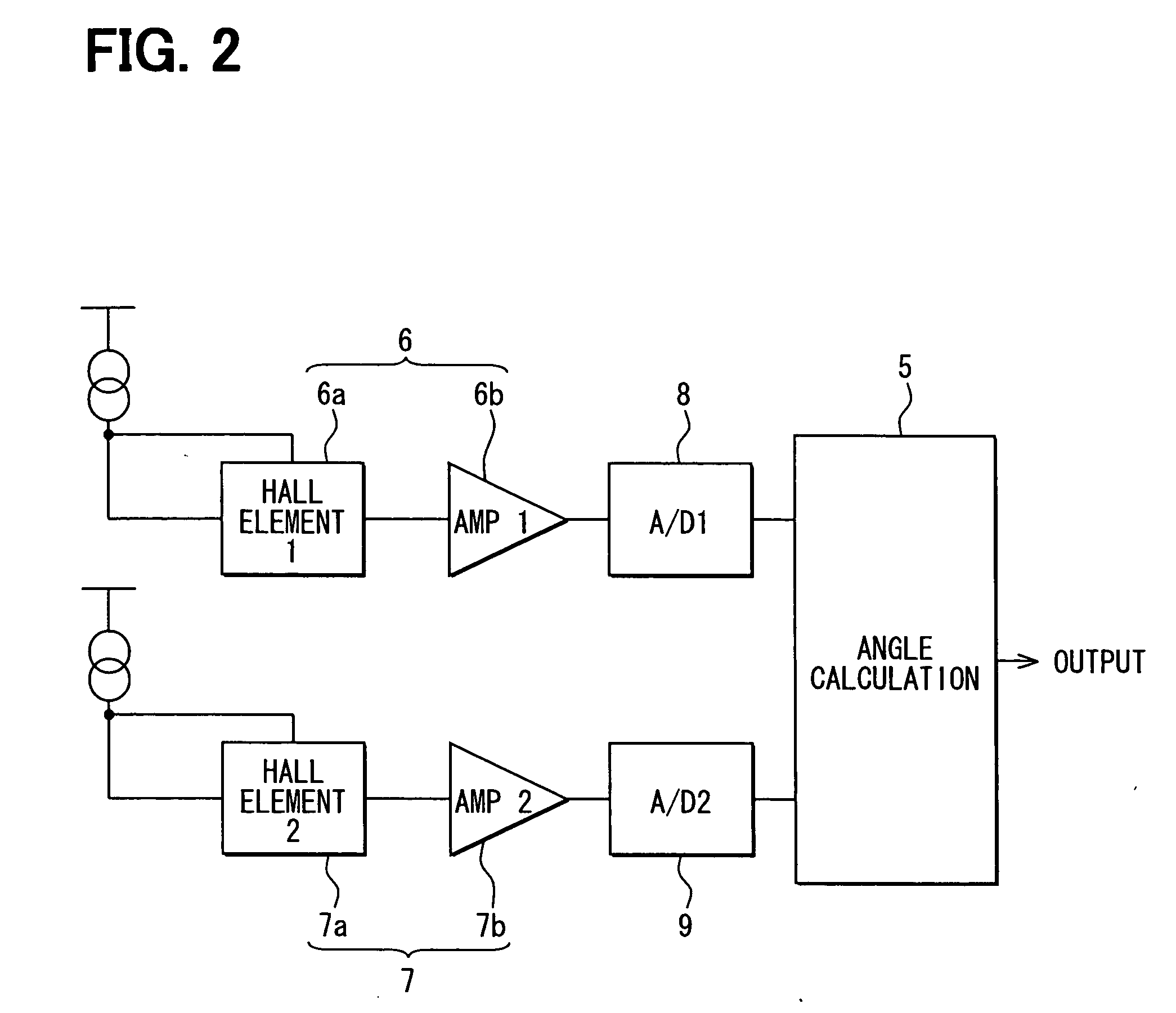Rotation angle detector
- Summary
- Abstract
- Description
- Claims
- Application Information
AI Technical Summary
Benefits of technology
Problems solved by technology
Method used
Image
Examples
first embodiment
[0053] A first embodiment of the rotation angle detector in the present invention is described with reference to FIGS. 1A to 3.
[0054]FIGS. 1A, 1B and 2 show a top view, a side view with a partial cross-section and a schematic diagram of an electric circuit of the rotation angle detector.
[0055] In the following description, X axis and Y axis are arranged orthogonally to each other in a plane that is perpendicular to the shaft, and Z axis is aligned with the shaft.
[0056] The rotation angle detector in the first embodiment includes a shaft 1 (i.e., a rotating member in this embodiment), a cylindrical magnet 3 fixedly disposed on the shaft 1 by using a supporting member 2, and a magnetic detector 4 and an angle calculation unit 5 both disposed on a member (not shown in the drawing) that relatively rotates to the shaft 1 (e.g., a circuit board or the like disposed on, for example, a housing).
[0057] The shaft 1 takes a cylindrical form made with the magnetic material (e.g., an iron or...
second embodiment
[0074] A second embodiment of the present invention is described with reference to FIGS. 4A and 4B. In the second embodiment, like numbers represent like parts as is represented in the first embodiment.
[0075] The second embodiment uses the magnet 3 in a disk form instead of the cylindrical form used in the first embodiment. The permanent magnet 3 is in the form of disk with a constant thickness. The center of the magnet 3 coincides with the center (i.e., the Z axis) of the shaft 1, and an inner circumference of the magnet 3 is directly attached on the shaft 1. Therefore, the magnet 3 integrally rotate with the shaft 1.
[0076] The magnetic poles in the magnet 3 are aligned with a line that is perpendicular to the Z axis. In the second embodiment, the magnetic flux is aligned with an arrow in a broken line in FIG. 4A with an assistance of the supplementary magnet 11 directly attached to the shaft 1 in an inner space that extends from the magnetic sensor 4 toward the shaft 1. The magn...
third embodiment
[0081] A third embodiment of the present invention is described with reference to FIGS. 5A and 5B. In the third embodiment, like numbers represent like parts as is represented in the first embodiment.
[0082] The third embodiment uses two of the magnets 3 in a disk form instead of the cylindrical form used in the first embodiment. Two of the permanent magnet 3 has the same constant thickness and the same magnetic intensity with the same dimensions. The center of the magnets 3 coincide with the center (i.e., the Z axis) of the shaft 1, and an inner circumference of the magnets 3 are directly attached on the shaft 1 having a predetermined amount of space interposed therebetween. The magnets 3 integrally rotate with the shaft 1 made with the magnetic material.
[0083] The supplementary magnet 11 is in a form of a cylinder disposed in the space inside of the magnetic sensor 4 having a constant radial thickness. The shaft 1 and the magnet 11 integrally rotate with their center points being...
PUM
 Login to View More
Login to View More Abstract
Description
Claims
Application Information
 Login to View More
Login to View More - Generate Ideas
- Intellectual Property
- Life Sciences
- Materials
- Tech Scout
- Unparalleled Data Quality
- Higher Quality Content
- 60% Fewer Hallucinations
Browse by: Latest US Patents, China's latest patents, Technical Efficacy Thesaurus, Application Domain, Technology Topic, Popular Technical Reports.
© 2025 PatSnap. All rights reserved.Legal|Privacy policy|Modern Slavery Act Transparency Statement|Sitemap|About US| Contact US: help@patsnap.com



